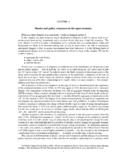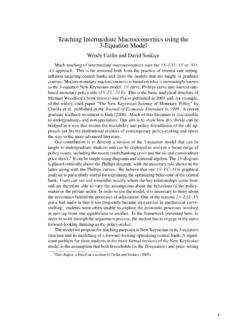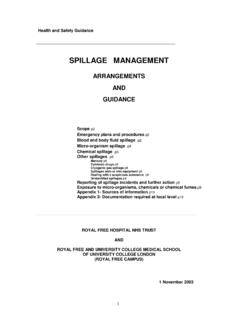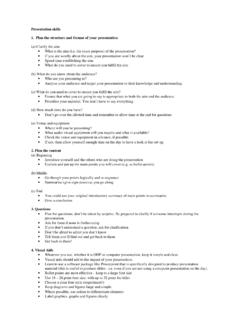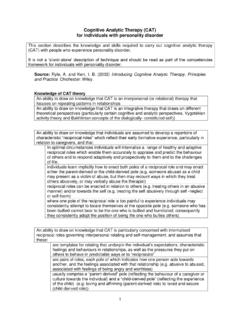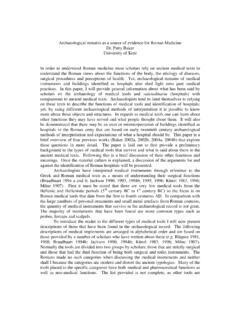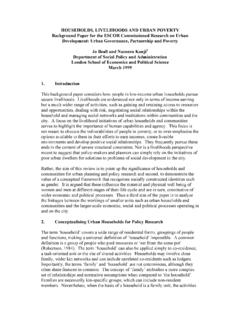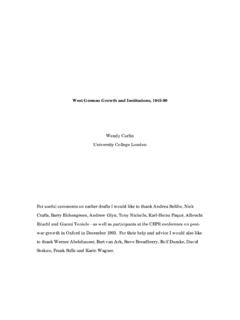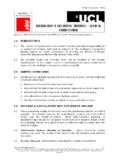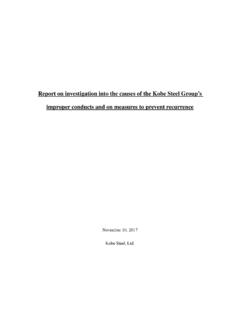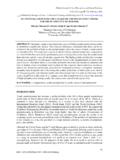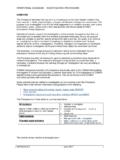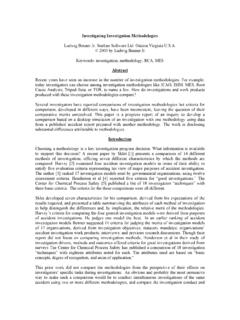Transcription of An investigation into how the concentration of lipase ...
1 Stephen Lucas A2 Biology Coursework 1 An investigation into how the volume of lipase affects the rate of the hydrolysis of lipids Introduction In this experiment I shall be investigating how varying the concentration of lipase affects the rate at which lipase catalyses the hydrolysis of the lipids found in Tesco s full fat milk. Background Information As globular proteins, enzymes have a specific three-dimensional shape which is determined by their sequence of amino acids. This specific tertiary structure is held together by ionic bonds, hydrogen bonds and disulphide bridges. Despite their generally large size, enzyme molecules have a small region that is functional, known as; the active site.
2 The substrate molecule is held within the active site by bonds that temporarily form between the R groups of the amino acids of the active site and groups on the substrate molecule. The enzyme is then able to break the bonds holding the substrate together, and so , making the substrate molecule break apart into several smaller molecules known as products . This structure is known as the enzyme-substrate complex. Figure 1 Enzyme-substrate complex: Enzymes can influence two reactions: catabolic, the break down of more complex substances into simpler ones, for example, the break down of lipids into fatty acids and glycerol. Or enzymes can influence anabolic reactions, the building up of complex molecules from simpler ones, for example ATP synthetase catalyses the reaction in which ATP is formed from ADP and an inorganic phosphate.
3 Enzymes are said to act as biological catalysts, speeding up chemical reactions without interfering with the reaction itself. In order for either the anabolic or catabolic reaction to occur, the reactants must have enough activation energy for the reaction to continue independently. Enzymes lower this energy hill of activation energy by providing an alternative reaction pathway of lower activation energy so that the reactions can occur more easily, at lower temperatures. As a result, some metabolic processes occur rapidly at the human body temperature of 37 C, which is relatively cool in terms of chemical reactions. The way in which enzymes operate is similar to the way in which a key operates a lock. This analogy, the lock and key theory first postulated in 1894 by Emil Fischer, describes the way in which substrates bind to the active site of the enzyme.
4 The substrate is the key whilst the cleft of the active site is the lock. Only the correct shaped key fits into the key hole of a lock, and so, only specific substrates can bind with the active site of an enzyme. Enzymes are therefore specific in the reactions they catalyse. Substrate molecule situated within the enzymes active site Single polypeptide chain of 50 amino acids which form the enzyme. Amino acids which bind to the substrate Bonds, such as hydrogen bonds, maintain the enzyme s shape Stephen Lucas A2 Biology Coursework 2 Figure 2 An example of the lock and key theory: Enzyme + substrate Enzyme-substrate complex Enzyme + products In practice, the process is more refined: it is suggested that, unlike a rigid lock, the enzyme actually changes its form slightly to fit the shape of the substrate.
5 In other words, it is flexible and moulds itself around the substrate, just as a glove moulds itself to the shape of someone s hand. The amino acid side chains of the enzyme can move into very precise positions to allow interaction with the substrate. As the enzyme alters its shape, the enzyme puts strain on the substrate molecule and thereby lowers its activation energy, this process is known as the induced fit theory of enzyme action. lipase is a type of enzyme known as a hydrolase and is responsible for catalysing the hydrolysis of triglycerides (the substrate) into fatty acids and glycerol. It is referred to as a hydrolase because the reaction that it catalyses is a hydrolysis reaction a reaction in which large molecules are broken down into smaller ones with the addition of water.
6 The molecules being broken down by lipase are lipids. Lipids are organic, non-polar compounds composed of carbon, hydrogen and oxygen which can be extracted using non-polar solvents such as alcohol and ether. Lipids have several roles both inside and outside of the body, including heat insulation, energy storage and the production of steroids and cholesterol. Lipids are also used to produce carotenoids, a photosynthetic pigment found in plants that usually appear orange in colour due to the lack of absorption of light of that particular wavelength. Retinol (Vitamin A) can be synthesised from carotene, which is an important constituent of rhodopsin, the pigment found in the rod cells that make up the retina. It is the breaking up of rhodopsin that allows us to see in low light intensities.
7 Triglycerides are the most common types of lipids, which consist of one glycerol molecule and three fatty acid molecules bound together by ester bonds. The glycerol molecule in any lipid always remains the same; it is the fatty acids that vary for different lipids. Fatty acids are organic acids consisting of a hydrocarbon tail usually consisting of 14 24 carbon atoms with a carboxyl group (-COOH) joined at one end. These fatty acid tails are hydrophobic (water-hating) which is why lipids are insoluble and must be transported in the body by lipoproteins in the blood. Active Site Substrate Product Molecules Enzyme Stephen Lucas A2 Biology Coursework 3 Figure 3 - The structure of triglyceride: Triglycerides are formed as a result of a condensation reaction (a reaction that produces water) involving the OH groups of glycerol and the COOH group of each fatty acid.
8 These condensation reactions produce ester bonds. lipase however, oxidises triglycerides, using three molecules of water to break these 3 ester bonds and to form one glycerol molecule and three individual fatty acid molecules. Figure 4 - Oxidation of triglycerides: The oxidation of lipids can release almost twice the energy that an equal mass of carbohydrate can, which is why lipids are suitable for generating ATP in respiration. As a result of their high energy yield and insolubility in water, lipids make good energy-storage compounds as they do not affect the water potential of the cells in which they are stored (fat is stored in adipose tissue) and having been oxidised they produce many hydrogen ions which can be picked up by NAD and other hydrogen acceptors.
9 Given that oxygen is available, these hydrogen ions can then be transported to the electron transport chain in the cristae of the mitochondria where they can be passed down progressively lower energy levels, releasing energy which can be harnessed for the production of ATP. Following the hydrolysis of a lipid, the resulting products glycerol and three fatty acids are not wasted but can be respired or converted into more useful compounds. For example, the glycerol molecule can be phosphorylated to triose phosphate which is an intermediate in glycolysis, it can either be converted to glucose or enter the Krebs cycle and have its remaining energy released. The three fatty acids produced can be broken down in the mitochondrial matrix to form two carbon acetyl fragments that can combine with coenzyme A to for form acetyl coenzyme A.
10 This acetyl coenzyme A can then enter Krebs cycle and be dehydrogenated, releasing hydrogen ions and energy that can be used to form ATP from ADP and an inorganic phosphate. Many tissues such as cardiac muscle and liver tissue will use fatty acids over glucose as their first choice respiratory substrate however this is not true for red blood cells or nervous tissue which must use glucose. Hydrophilic head Hydrophobic Fatty acid tails lipase Enzyme Water molecule is used to break an ester bond Stephen Lucas A2 Biology Coursework 4 Fat digestion in the human body takes place mostly in the stomach and the duodenum of the small intestine. Although individually, amino acids are amphoteric and can both accept hydrogen ions and lose hydrogen ions which allows them to resist pH changes, the tertiary structure of the lipase enzyme however is sensitive to changes in pH.
